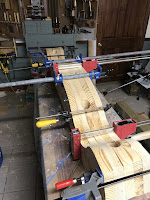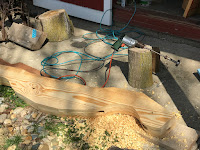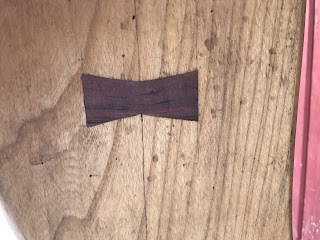 |
| Tom "being nice" to Blue. |
Tom Nehil helps with the oxen classes at Tillers and we've worked together for a few years now in that capacity. While adjusting an Oliver 99 plow (How fine a "99" is as a walking plow will surely be the subject of another tale), Tom mentioned that - as a structural engineer- he recommended that we "bracket the problem:" adjust it too far one way, then the other. Once we had the limits, we could fine tune the middle. The simplicity of the idea struck me and I started employing it in other places.
At school, I teach kids to use 'bracketing' when problem solving or estimating. Kids who have me for multiple classes probably grow weary of the story, but I don't. Lucky them, eh?
Recently, we trained chickens in our psychology class. Amazingly, with nothing but positive reinforcement, the chickens learn- in one class period- to peck a green 'X,' while ignoring a green circle. That got me thinking about the limits of positive reinforcement.
I'm not describing it fully here, but reinforcements make behaviors continue or increase. Punishments make behaviors decrease or stop.
I'm still not describing it fully here, but please stop calling punishments 'negative reinforcements.' They are NOT synonyms. (Also another tale for another day.)
I often tell students- both high school psych students and adult oxen driving students- that you should aim for 90% positive reinforcements and 10% punishments, although, like Mike Mulligan, I "had never been quite sure that this was true."
Monday, I yoked up Brutus and Cassius to move a little compost. I decided to emphasize the reinforcements and count them, while minimizing- and counting- the punishments. I hoped to hit the 90% mark.
I lost count.
All was not lost, though, as I was also keeping track of how many times I touched the animals with the stick in order to direct them.
Taps to start walking? Count them. Taps to stop? Count them. Taps for Gee and Haw? Count them. You get the idea.
Brushes for positive reinforcement? They don't count. They are reinforcements, designed to increase desirable behaviors. They aren't directions or punishments. Instead, they are reinforcements if they happen directly after, or during, a desired behavior. If they aren't related to a behavior, they are just called "being nice."
Two trips around the yard with the cart, stopping multiple times, pivoting 180 degrees twice, standing to load and unload, sidestepping, yoking, unyoking. About 45 minutes total. The total number of taps?
Zero.
Lots of brushing. Lots of praise. But zero physical punishment or tactile direction. I did punish them four times. I barked a command to "head up!" when they were dropping their heads while standing. Since the behavior stopped, it's called a punishment. A mild one to be sure, but I still noted it. . . like a psych teacher would.
I'll keep trying to push the limits toward reinforcements. And, come to think of it, I think I'll avoid the other end of the 'bracket' altogether. I'd suggest you do the same. See how many flies you can catch with honey. . .















